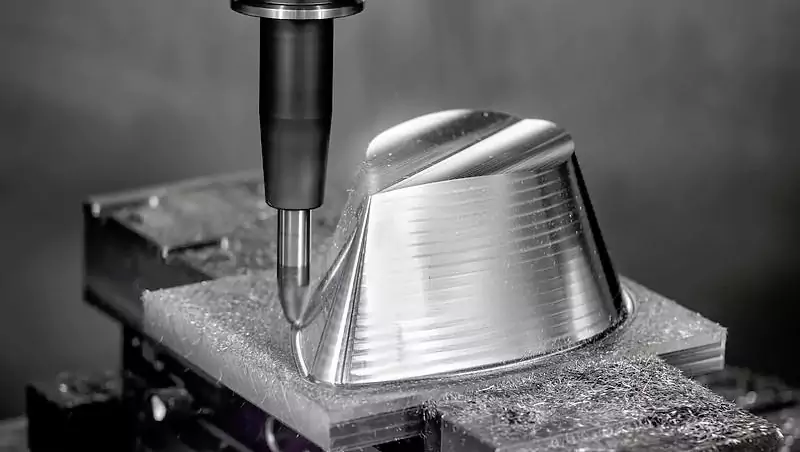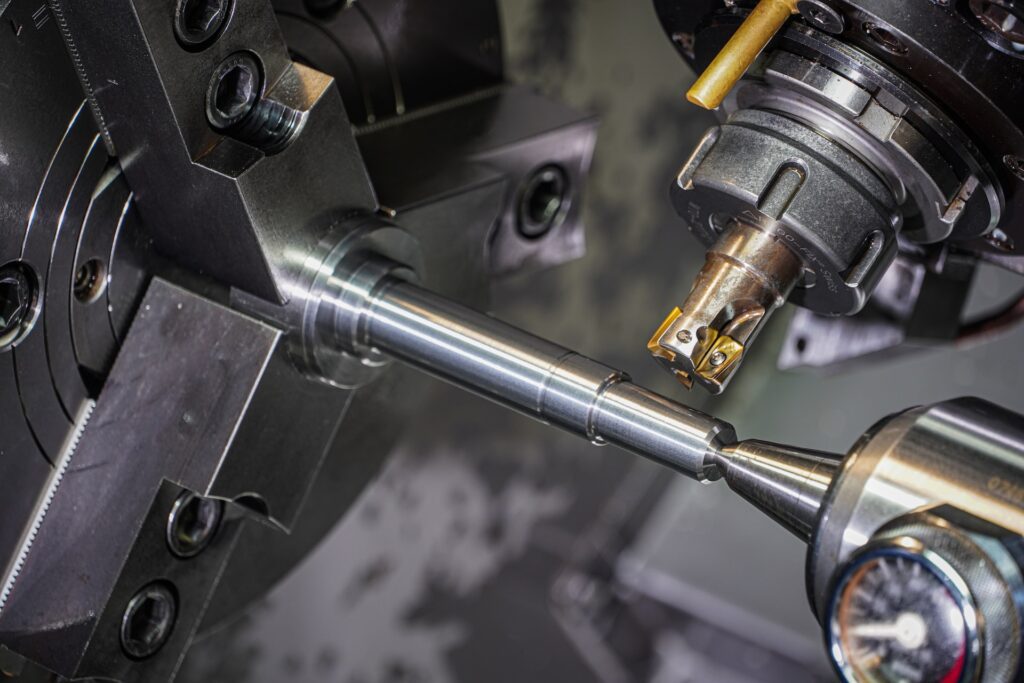Author: Mike Hepburn
If you’re delving into the world of CNC machining or even if you’re an experienced machinist, one of the questions that often arises is: What type of coolant should you use? Here, we’ll address this by breaking down the functions of coolant, the importance of choosing the right one for your CNC machine, and delve deeper into one of the popular types – soluble oils.

Understanding the Role of Coolant in CNC Machining
Before discussing which coolant to choose, it’s essential to understand its primary function and why it’s so critical in the CNC machining process.
The Critical Functions of Coolant
- Temperature Control: CNC machining produces significant heat, which can distort the workpiece and dull the tool quickly. Coolant helps dissipate this heat, ensuring consistent machining results.
- Lubrication: Reducing friction between the tool and the workpiece is crucial. A good coolant acts as a lubricant, reducing wear and tear on the tools, and ensures a smoother cut.
- Chip Removal: As the CNC machine works, it generates chips. Coolants help flush these chips away from the work area, ensuring they don’t interfere with subsequent cuts.
- Protection: Coolants provide a protective barrier against corrosion for both the machine components and the workpiece, thus enhancing their longevity.
Choosing the Perfect Coolant for Your CNC Machine
Different CNC machines and materials may require different types of coolants. Here are the factors you should consider:
- Machine Type: CNC mills, lathes, and routers might have varied requirements due to the nature of their operations.
- Material Type: Hard metals like stainless steel generate more heat compared to softer materials like aluminum. Therefore, they might need a more effective cooling solution.
- Tooling: The type of tool you use, such as high-speed steel or carbide, can influence your coolant choice.
- Environmental and Health Concerns: Some coolants might be harmful if inhaled or might cause skin irritations. Choosing a coolant that’s both effective and safe is paramount.
- Cost: While it’s tempting to opt for the cheapest coolant available, it’s essential to consider its long-term implications on tool life, machine maintenance, and product quality.
A Deep Dive into Soluble Oils
Soluble oils are among the most commonly used coolants in CNC machining. They are essentially mineral oils that are diluted with water to form an emulsion.
Read What is the difference between machining Centre and turning Centre?
Why Use Soluble Oils?
- Cooling and Lubrication: Soluble oils provide a balance between cooling and lubrication. While they might not be as effective coolants as synthetic or semi-synthetic fluids, their lubrication properties are superior.
- Cost-effective: In general, soluble oils tend to be more affordable than some of the other coolant alternatives.
- Versatility: They can be used with a wide variety of metals, making them a flexible choice for machine shops that work with multiple materials.
Considerations when Using Soluble Oils
- Maintenance: Soluble oils can become contaminated over time. Regular maintenance, such as checking for bacterial growth and removing tramp oil, is crucial.
- Skin Irritation: Some operators might find soluble oils irritating to the skin. Proper safety measures, such as wearing gloves, are recommended.
- Mixing: The ratio of water to oil is crucial. Too much oil can reduce cooling properties, while too little can reduce lubrication. Always refer to the manufacturer’s guidelines when mixing.
Exploring the World of Synthetic Fluids
Synthetic Fluids: A Modern Coolant Solution
Synthetic fluids stand out in the realm of CNC coolants due to their complete absence of mineral oils. These are formulated from organic and inorganic compounds, providing unique advantages.
Advantages of Using Synthetic Fluids
- Temperature Management: Synthetic fluids often excel in dissipating heat, making them ideal for high-speed machining processes where significant heat is generated.
- Longer Lifespan: Synthetics don’t degrade as quickly as mineral-based oils, reducing the frequency of coolant changes and saving costs in the long run.
- Reduced Smoke & Mist: These fluids tend to produce less mist and smoke, creating a cleaner and healthier working environment.
Concerns Associated with Synthetic Fluids
- Cost: High-quality synthetic fluids can be more expensive than other coolants, although their longevity might offset this initial cost.
- Less Lubrication: Synthetics generally offer less lubrication than mineral-based oils, which might not make them suitable for all machining processes.

Venturing into Semi-Synthetic Fluids
Blending the Best: The Semi-Synthetic Approach
Semi-synthetic fluids strike a balance between synthetic and soluble oils. As their name suggests, they’re a blend, offering the benefits of both.
Why Opt for Semi-Synthetic Fluids?
- Versatility: These coolants provide both cooling from the synthetic part and lubrication from the soluble oil part. This makes them adaptable to a variety of machining processes.
- Extended Tool Life: The balanced nature of semi-synthetics can often result in longer tool life.
- Reduced Maintenance: With a combination of properties, these fluids can offer reduced maintenance needs compared to using purely soluble oils.
Points to Ponder with Semi-Synthetic Fluids
- Mixing Precision: The ratio of synthetic to soluble oil needs to be optimal for best results. It’s always crucial to follow the manufacturer’s guidelines.
- Cost Considerations: They might be priced between soluble oils and full synthetics, so one has to weigh the benefits against the investment.
Read CNC Case Studies: A Comprehensive Look at Successful Implementations in Various Industries
Diving Deep into Straight Oils
Straight Oils: The Pure, Unadulterated Lubrication Power
Straight oils are non-emulsifiable and are used in their natural state without any dilution with water. They are predominantly used for specific processes where extreme pressure is present.
The Strong Suits of Straight Oils
- Superior Lubrication: Among all coolant types, straight oils offer the best lubrication, ideal for processes like broaching or gear cutting.
- Enhanced Surface Finish: Due to their lubrication prowess, they can provide superior surface finishes on the workpiece.
- Stability: Being non-emulsifiable means there’s no concern about the emulsion breaking down over time.
Limitations of Using Straight Oils
- Limited Cooling: Straight oils don’t dissipate heat as effectively as other coolants. They might not be suitable for high-speed operations that generate significant heat.
- Safety Concerns: These oils can produce mists that might be hazardous if inhaled. Proper ventilation is paramount.
- Environmental Impacts: Disposing of straight oils requires care due to their environmental footprint.
Discovering the Right Coolant Concentration
The power of your chosen coolant isn’t solely determined by its type. The concentration also plays a significant role in its performance. It’s not merely about pouring coolant into your CNC machine, but about finding that ‘sweet spot’ where your coolant concentration provides optimum cooling, lubrication, and chip removal.
To establish the ideal concentration, consider the specific operation at hand. High-speed machining operations with softer materials like aluminum may require a leaner concentration, emphasizing the coolant’s ability to dissipate heat. Conversely, slow speed, high-pressure operations like broaching or gear cutting on harder materials might require a richer mix for better lubrication.
Navigating the Machine Coolant Concentration Chart
A coolant concentration chart can be an excellent tool for finding that balance. This chart typically presents coolant concentration levels against factors such as machining speed, heat generation, or material hardness. Using this chart as a guide, you can adjust your coolant concentration to match your specific operational needs. Remember, though, that these charts are general guides and may need to be adjusted based on real-world observations and tool life.
Integrating Water-Based Fluids and High-Pressure Coolants into CNC Machining
The introduction of water-based fluids and high-pressure coolants has been a game-changer in CNC machining. Water-based fluids, like soluble oils, synthetic, and semi-synthetic fluids, offer excellent cooling and, depending on the mix, varying levels of lubrication. Their effectiveness can be dramatically boosted when applied under high pressure.
High-pressure coolant systems can penetrate closer to the cut, improving chip removal, reducing heat generation, and enhancing tool life. They are particularly useful in deep-hole drilling, turning, and high-speed milling operations.
They require careful handling and may not be suitable for all machines. Also, while high-pressure coolants can improve productivity and tool life, they might be cost-prohibitive for smaller operations.
Giving Your Machining Coolant the Respect It Deserves
In the grand scheme of CNC machining, it’s easy to overlook the importance of the humble coolant. Remember that your choice of coolant and its proper application directly influences the efficiency of your machining process, the longevity of your tools, and ultimately, the quality of your end product.
Maintaining the right concentration, adhering to safety measures, and regular system checks for contamination are key to getting the most from your coolant. Whether you use soluble oils, synthetics, semi-synthetics, or straight oils, giving your coolant the respect it deserves can go a long way in optimizing your CNC machining operations.
